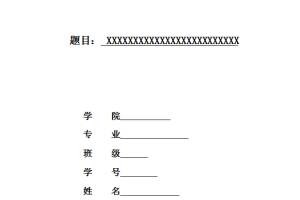纵观世界发展国家可以发现,台灯是人们生活中用来照明的一种家用电器。而它一般分为两种,一种是立柱式的,一种是有夹子的。它的工作原理主要是把灯光集中在一小块区域内,集中光线,便于工作和学习。一般台灯用的灯泡是白炽灯或者节能灯泡。 有的台灯还有应急功能,用于停电时无电照明已用来应急。触控式台灯的原理是内部安装电子触摸式ic与台灯触摸处之电极片形成一控制回路。
本文阐述了目前台灯的市场现状,台灯对设计分析,探讨了本次毕业设计的台灯设计方案做了详细的说明,并围绕台灯设计对人的眼睛保护的影响以及色彩环保的重要性等问题讨论了台灯的设计方案,就以本次案例进行了一系列的设想,提出了以人为本的设计实例。
本文系运用了规范的研究方法进行了专题的研究。全文分三个部分;首先,当人体碰触到感应之电极片,触摸信号藉由脉动直流电产生一脉冲信号传送至触摸感应端,接着触摸感应端会发出一触发脉冲信号,就可控制开灯;其次,如再触摸一次,触摸信号会再藉由脉动直流电产生一脉冲信号传送至触摸感应端,此时触摸感应端就会停止发出触发脉冲信号,当交流电过零时,灯自然熄灭。再次,有时停电后或电压不稳也会有自行亮起情形,如果触摸接收信号敏感度极佳纸张或布也是可以控制的。
关键词:台灯;人性化;安全
Abstract
The lamp is used for illumination of the people living in a household appliance. It is generally divided into two kinds, one kind is a column type, one is with clips. Its working principle is mainly concentrated in a small area of the light, the concentrated light, easy to work and study. General table lamp bulb is incandescent lamp or bulb.
Some lamps have emergency function, used to cut without electric lighting has been used for emergency. Touch control type lamp principle is internally mounted electronic touch IC and touch the electrode pads are formed of a control loop.
When the human body touch sensing electrode sheet, a touch signal by pulsating direct current to generate a pulse signal is transmitted to the touch sensing end, then touch sensing end sends a trigger pulse signal, can control the light; if the touch time, touch signals by pulsating direct current to generate a pulse signal is transmitted to the touch sensing end at this time, touch sensing end will stop sending a trigger pulse signal, when the alternating current crosses zero, lights out. But sometimes, after a power outage or voltage instability may also have their own light, if you touch the received signal sensitivity excellent paper or cloth can be controlled.
Key words:Table lamp; humanized; safety
目 录
引 论························································································ 1
一、市场调研················································································ 1
(一)国际家电形势························································································ 1
(二)国际现有家电情况················································································· 2
(三)人群生活状况························································································ 2
二、现有产品分析········································································· 2
(一)现有产品工作原理················································································· 3
(二)现有产品造型趋势················································································· 3
(三)现有产品色彩形式················································································· 2
(四)现有产品材料工艺················································································· 2
三、结合毕业设计的研究······························································· 4
(一)台灯造型设计························································································ 5
(二)台灯色彩设计························································································ 5
(三)台灯材料应用························································································ 6
结 语··························································································· 7
主要参考文献················································································ 8
致 谢··························································································· 9





